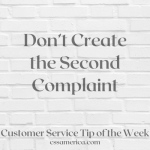Several South Carolina schools were given "Red Carpet" awards for excellence in customer service. That’s right, high schools, middle schools, elementary, and other school-types received recognition for being "family friendly." An article (http://www2.scnow.com/scp/news/education/article/schools_win_awards_for_family-friendly_atmosphere_customer-focused_service/157334/) published yesterday noted that the winners of these awards received actual red carpets to display in their school lobbies – great form of recognition!
Schools had to describe their "family-friendly philosophies and environments, along with the methods used to promote and self-evaluate those efforts. They also were required to include copies of their school’s communication plan."
Examples of the winning schools included how one school made their library open to the community to use (particularly for internet access); another school opened its gym to community leagues/groups; another ensured it had extra coverage of phones and the front desk during the busiest hours; another increased their bilingual capabilities to match the changing mix of local residents.
It’s wonderful that schools understand and embrace the importance of customer service. The winners realize that they need to create a positive environment through their facility and their people. The examples of winning schools illustrate some key points which apply to any business including: be accessible to your customers to attract them (note the library and gym examples), make sure that you match your staffing to your workload to minimize wait times (note the front desk example), and change your service offerings and the way you do business based on your changing customer base (note the bilingual example).
Customer service is a large part of what customers consider when they’re evaluating any business – even schools.
Learn from these schools to attract customers to you, to minimize customer waits, and to make sure you’re delivering on your customers’ changing needs.
Interested in improving your company’s customer service? See more information at: http://www.cssamerica.com/





















